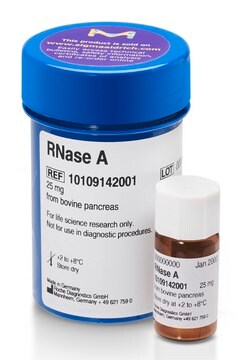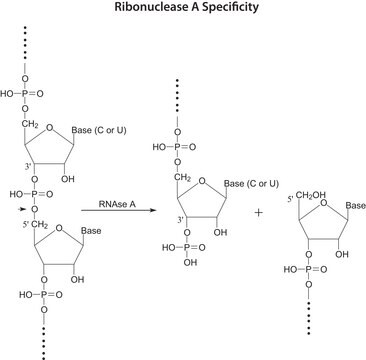537059
Propidium Iodide
Membrane impermeable DNA intercalator.
Sinonimo/i:
Propidium Iodide
About This Item
Prodotti consigliati
Livello qualitativo
Forma fisica
solid
Produttore/marchio commerciale
Calbiochem®
Condizioni di stoccaggio
OK to freeze
protect from light
Colore
dark red
input
sample type intact cells
Fluorescenza
λex ~536 nm
λem ~617 nm
Condizioni di spedizione
ambient
Temperatura di conservazione
2-8°C
InChI
1S/C27H33N4.2HI/c1-4-31(3,5-2)17-9-16-30-26-19-22(29)13-15-24(26)23-14-12-21(28)18-25(23)27(30)20-10-7-6-8-11-20;;/h6-8,10-15,18-19,29H,4-5,9,16-17,28H2,1-3H3;2*1H/q+1;;/p-1
XJMOSONTPMZWPB-UHFFFAOYSA-M
Descrizione generale
Azioni biochim/fisiol
Membrane impermeable DNA intercalator
Attenzione
Nota sulla preparazione
Ricostituzione
Altre note
Crompton, T., et al. 1992. Biochem. Biophys. Res. Commun. 183, 532.
Darzynkiewicz, Z., et al. 1992. Cytometry13, 795.
de Caestecker, M.P., et al. 1992. J. Immunol. Methods154, 11.
Pollice, A.A., et al. 1992. Cytometry13, 432.
Note legali
Avvertenze
Warning
Indicazioni di pericolo
Consigli di prudenza
Classi di pericolo
Muta. 2
Codice della classe di stoccaggio
11 - Combustible Solids
Classe di pericolosità dell'acqua (WGK)
WGK 3
Punto d’infiammabilità (°F)
Not applicable
Punto d’infiammabilità (°C)
Not applicable
Certificati d'analisi (COA)
Cerca il Certificati d'analisi (COA) digitando il numero di lotto/batch corrispondente. I numeri di lotto o di batch sono stampati sull'etichetta dei prodotti dopo la parola ‘Lotto’ o ‘Batch’.
Possiedi già questo prodotto?
I documenti relativi ai prodotti acquistati recentemente sono disponibili nell’Archivio dei documenti.
I clienti hanno visto anche
Il team dei nostri ricercatori vanta grande esperienza in tutte le aree della ricerca quali Life Science, scienza dei materiali, sintesi chimica, cromatografia, discipline analitiche, ecc..
Contatta l'Assistenza Tecnica.









